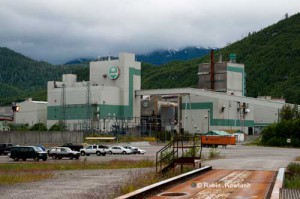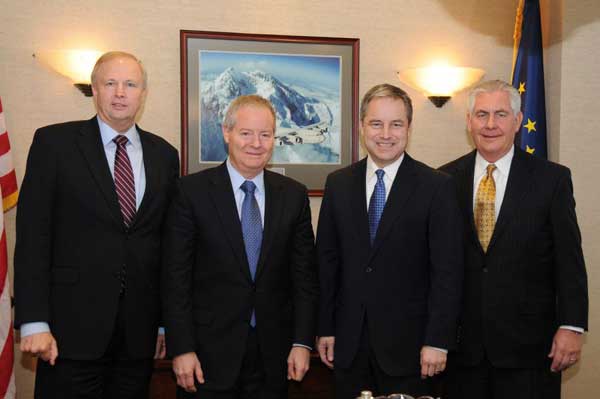The race to ship liquified natural gas to Asia is getting hotter with three new powerhouses joining the scramble for west coast export terminals.
 The Prince Rupert Port Authority announced Tuesday, Feb. 7, that it is working with an energy powerhouse BG Group, on a feasibiity study for an LNG terminal at Ridley Island.
The Prince Rupert Port Authority announced Tuesday, Feb. 7, that it is working with an energy powerhouse BG Group, on a feasibiity study for an LNG terminal at Ridley Island.
At the same time The Globe and Mail reports that there are rumours that Exxon Mobile is “examining LNG options” in the northwest. The paper also quotes sources as saying the Japanese firm Itochu is looking to export gas via Kitsault, where there is an abandoned molybdenum mine, town and port.
British Gas was once the retail domestic supplier of natural gas to the UK market. The company split in two in 1997, with BG Group becoming an international exploration and energy production company.
![]() Itochu is a 150-year old Japanese company which began as Chibou Itoh’s one man linen trading company, later adding drapery shops and over more than a century expanding operations to become a major international conglomerate with strong interests in the energy sector. According to the company website, Itochu is also a player in the solar energy and bio-ethanol fields.
Itochu is a 150-year old Japanese company which began as Chibou Itoh’s one man linen trading company, later adding drapery shops and over more than a century expanding operations to become a major international conglomerate with strong interests in the energy sector. According to the company website, Itochu is also a player in the solar energy and bio-ethanol fields.
“The Prince Rupert Port Authority has engaged with the BG Group to consider Prince Rupert for a potential LNG export facility. The BG Group is number two in the world in LNG, next to Shell and they are number two depending on what measurements you look at, so they are already a big player in that industry” according to Shaun Stevenson, vice-president of Marketing and Business Development for the Prince Rupert Port Authority.
“We have an agreement signed to provide them a site and to secure that site to examine the suitability of it and the feasibility of the facility…We have given them a period of time to conduct the feasibility and suitability study, and if it is determined to be viable from the preliminary work that is done then we will look at further development,” he said.
David Byford, spokesman for the BG Group in Houston, confirmed the deal has been signed but cautioned “Prince Rupert is one of the areas we are looking at, and we are in the very early feasibility study stage.”
“The west coast of Canada is certainly advantageous for LNG export, and there is a lot of natural gas in BC as well.”
Prince Rupert port spokesperson Michael Gurney says it will be 12 to 24 months before there’s a clear commitment on the project.
A spokesman with Itochu declined comment when contacted by The Globe and Mail. Kitsault, near Alice Arm, in the traditional territory of the Nisga’a nation, was the site of a short lived molybedenum venture by the Phelps Dodge company. After the mine was abandoned, the town was bought by Indo-American businessman Krishnan Suthanthiran and is now promoted as a nature and wilderness retreat, called Heaven on Earth.
![]() The Globe and Mail also quotes sources as saying that Exxon Mobil Corp., which has substantial natural gas reserves in northeastern B.C., has also been examining LNG options. Pius Rolheiser, a spokesman with Canada’s Imperial Oil Ltd., which is majority-owned by Exxon, said in a statement to the Globe and Mail: “Imperial continuously reviews a variety of opportunities to increase value to our shareholders. As a matter of practice, and for competitive reasons, we do not discuss specific strategies.”
The Globe and Mail also quotes sources as saying that Exxon Mobil Corp., which has substantial natural gas reserves in northeastern B.C., has also been examining LNG options. Pius Rolheiser, a spokesman with Canada’s Imperial Oil Ltd., which is majority-owned by Exxon, said in a statement to the Globe and Mail: “Imperial continuously reviews a variety of opportunities to increase value to our shareholders. As a matter of practice, and for competitive reasons, we do not discuss specific strategies.”








